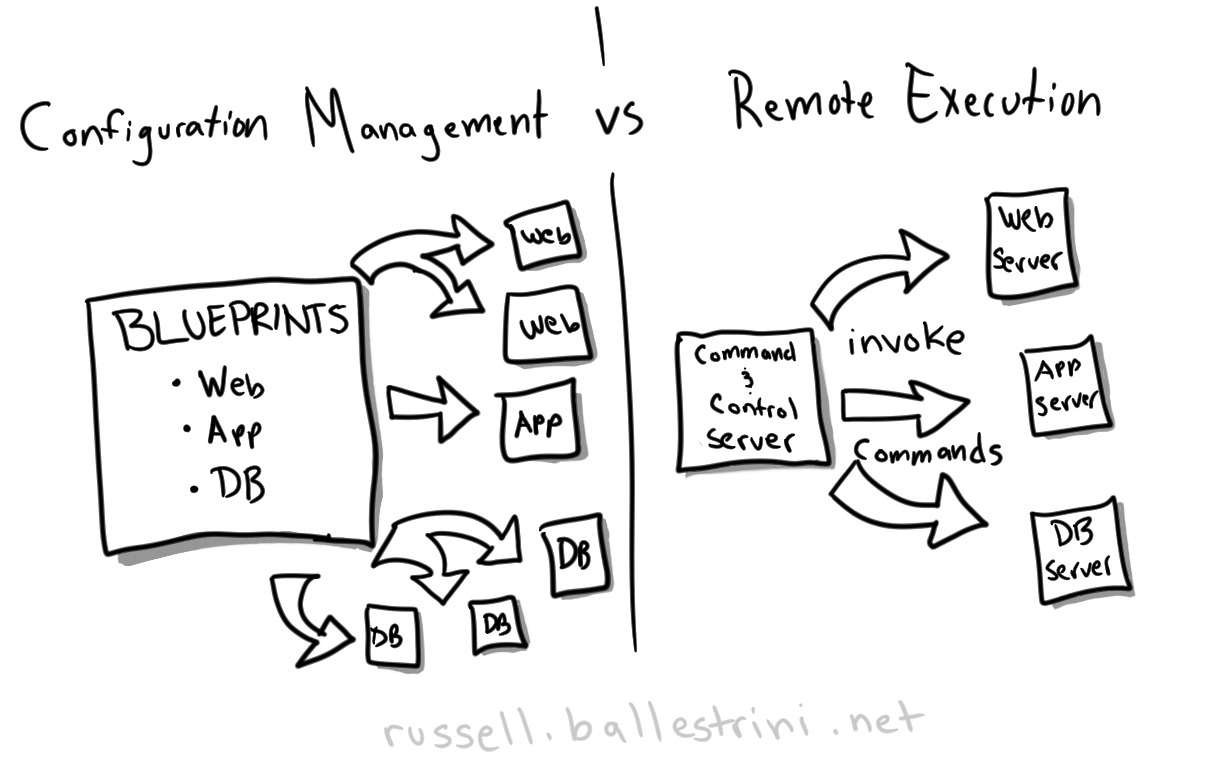
What is configuration management?
In a perfect world configuration management provides a centralized, revision controlled, self-documented, change management location for manifests and formulas which both define how to build a complete system and organize a means of knowledge transfer. An infrastructure perfectly described in configuration management allows any single part of the system to be created, reproduced, multiplied, self-healed or even re-purposed.
When should I use configuration management?
Use configuration management whenever you intend to permanently alter system state or infrastructure data.
System state - the current state of the system:
- operating system (distro,kernel,patches,hot-fixes)
- software installed (base,role-specific)
- services running (base,role-specific)
- user access
- etc
Infrastructure data - the information that describes the infrastructure:
- asset information (models,specs,IP,DNS,rack-elevation,etc)
- roles (app,web,db,proxy,load-balancer,etc)
- current allocations (allocated,unallocated,number of servers in each role,etc)
- etc
What is remote execution?
Remote execution is the act of issuing commands to one or more remote systems. The most popular remote execution system in use today is SSH. SSH is great for maintaining a small group of dissimilar systems. Once the system count grows and similar roles present themselves, start looking at something like Fabric. Fabric is a python framework which builds on top of the SSH protocol and makes it possible to invoke the same command on hundreds of servers sequentially. Once the fleet count reaches thousands of servers and commands must run in parallel, look at Salt-stack's remote execution layer written with python and ZeroMQ.
When should I use remote execution?
Only use remote execution for ad hoc reports, data collection, or for temporary tests which have no expectation of persistence after research is complete. Frequent data collection jobs work best when implemented in a metrics collection or monitoring system. (I'll save that for another post)
When should I not use remote execution?
Do not use remote execution to change the state of the system or the data which describes the infrastructure! If a remote execution job changes either state or data it should be placed into the configuration management for the reasons mentioned above.